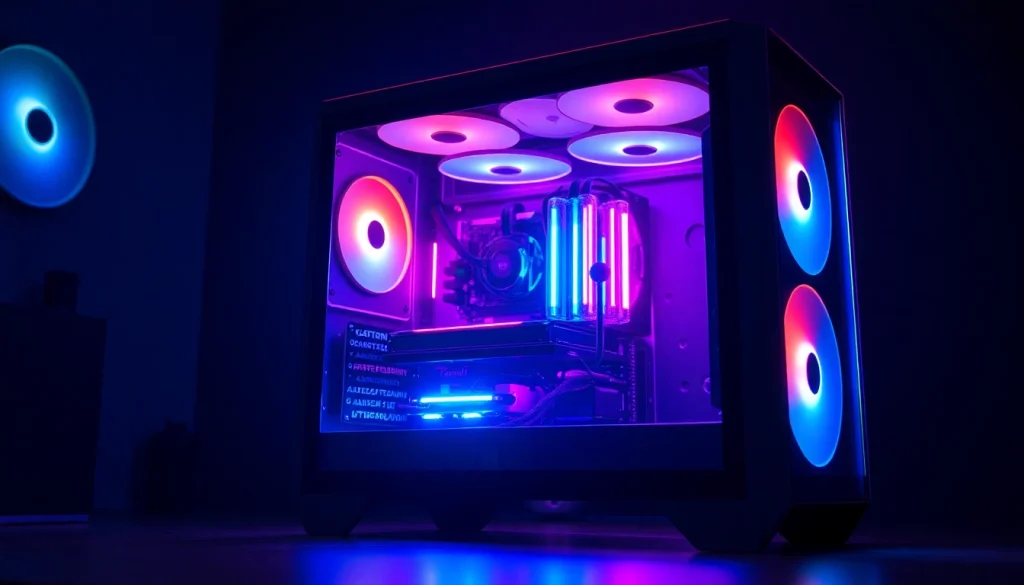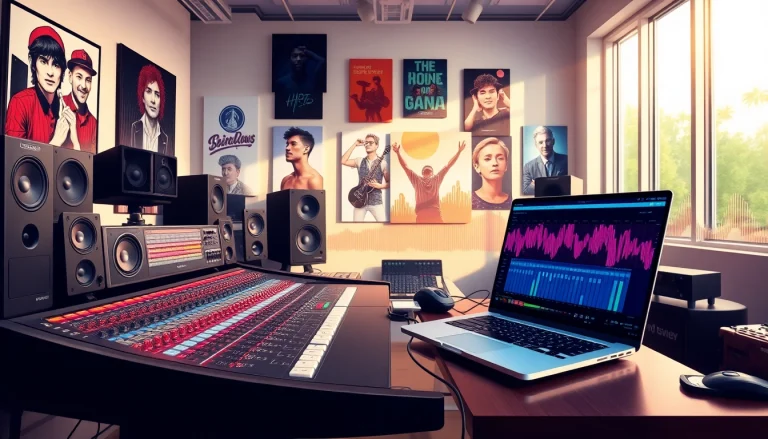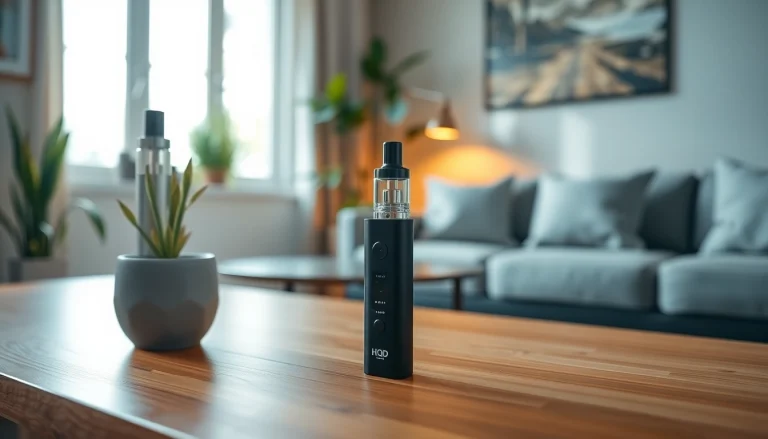
Understanding Gaming PC Cases
What is a Gaming PC Case?
A gaming PC case is the enclosure that houses all the essential components of a gaming computer, including the motherboard, CPU, GPU, power supply unit, storage devices, and cooling systems. Beyond its primary function of protection, the gaming PC case plays a significant role in the aesthetics and functionality of the computer system. Whether it’s a sleek design that complements a gaming setup or features that enhance airflow to maintain optimal performance during long gaming sessions, the choice of a gaming pc case can greatly influence the overall user experience.
Types of Gaming PC Cases
Gaming PC cases come in various shapes and sizes to accommodate different user needs and preferences. Understanding the types is crucial before making a purchase:
- Full Tower Cases: These cases offer the most space, allowing for extensive cooling options, modular components, and ample room for future upgrades. They are perfect for high-end gaming builds that require more than one GPU.
- Mid-Tower Cases: The most popular choice among gamers, mid-tower cases strike a balance between size and expandability. They typically support multiple cooling configurations and can fit most hardware setups while being easier to manage.
- Mini Tower Cases: Ideal for compact builds, mini towers are suitable for gamers who prioritize saving space. They can support fewer components and require careful planning for airflow.
- Micro ATX and Mini-ITX Cases: Designed for smaller form factors, these cases cater to users looking for a portable and space-efficient option while still delivering sufficient performance for gaming.
Common Features of Gaming PC Cases
When selecting a gaming PC case, it’s essential to consider features that enhance user experience and performance:
- Tempered Glass Panels: Many modern gaming cases feature tempered glass side panels that allow users to display their components, lighting, and overall aesthetics of the build.
- RGB Lighting: Customizable RGB lighting has become a popular trend, giving users the ability to sync their setup with their gaming environment.
- Efficient Airflow Design: Proper airflow is critical to keeping temperatures down. Look for cases with mesh panels, multiple fan mounts, and good cable management options.
- Expansion Slots: Ensure the case has enough expansion slots for future upgrades, including additional GPUs or other expansion cards.
Essential Considerations for Choosing a Gaming PC Case
Size and Form Factor
The first step in choosing a gaming PC case is determining the appropriate size and form factor for your needs. The components you plan on using will dictate the case size. For instance, if you’re building a high-performance machine with dual GPUs, a full tower case is recommended for optimal airflow and expansion options. Conversely, if space is limited, a micro ATX or mini-ITX case can suit your needs effectively.
Cooling Options and Airflow
Cooling is paramount in a gaming rig. The gaming case you select should have various cooling options available. Look for cases that support both air and liquid cooling solutions:
- Air Cooling: Ensure that the case has space for multiple fans, ideally with options for front, rear, and top placements. The number of fans that come pre-installed can also influence your decision.
- Liquid Cooling: For those who prefer liquid cooling, check if the case supports radiator sizes that match your cooling solution (e.g., 240mm or 360mm radiators).
Overall airflow is essential for maintaining performance, so consider cases with strategically placed ventilation and filters to reduce dust entry.
Build Quality and Aesthetics
Quality construction materials contribute significantly to the durability and longevity of a gaming PC case. Look for cases made of steel and aluminum, as these materials offer a robust structure while enhancing overall aesthetic appeal. Gaming cases come in various styles, from minimalist modern designs to bold, colorful options with LED lighting. Your choice should reflect your personality and match your gaming environment.
Top Gaming PC Case Brands and Models
Popular Mid-Tower Gaming Cases
Mid-tower cases are some of the best options for gamers due to the perfect blend of size, expandability, and price. Here are a few standout models:
- Corsair 4000D Airflow: Known for its excellent cooling potential and spacious interior, it also features cable management solutions and a striking design.
- NZXT H510: This case offers a sleek design, tempered glass side panel, and a variety of colors. It supports efficient airflow and is easy to build in.
- Phanteks Eclipse P400A: Renowned for its performance, the P400A boasts a premium airflow design, RGB lighting, and ample space for expansion.
Review of Budget-Friendly Options
Gamers on a budget need not sacrifice quality. Several affordable options are available without skimping on features:
- Cooler Master MasterBox Q300L: A compact, highly customizable case with great airflow features and an attractive mesh design.
- Thermaltake V200: This is an excellent choice for budget systems, offering RGB fans and a tempered glass panel at a reasonable price.
- Fractal Design Focus G: Known for its sleek design and vibrant color options, it provides excellent airflow and cable management possibilities.
Premium and High-Performance Models
For gamers seeking a top-of-the-line experience, premium models offer advanced features and superior build quality:
- Lian Li PC-O11 Dynamic: A case that merges functionality and aesthetics, well regarded for its cooling potential and dual-chamber layout.
- Corsair 5000D Airflow: This high-end case prioritizes airflow and offers plenty of space for custom setups, making it suitable for enthusiasts.
- Thermaltake Tower 500: A unique tower design that enables impressive ventilation and aesthetic appeal, suitable for elaborate builds with custom cooling solutions.
How to Build Your Gaming PC Within a Case
Step-by-Step Assembly Guide
Building your gaming PC can be a rewarding project. Here’s a detailed guide to help you through the assembly process:
- Prepare Your Workspace: Ensure you have a clean, static-free area to work, along with all your components ready for assembly.
- Install the Power Supply: Begin by securing your power supply unit (PSU) inside the case. Ensure the fan points downward (for cases with ventilation) for optimal cooling.
- Attach the Motherboard: Carefully align the motherboard with the standoffs provided in the case. Secure it using the screws included with the motherboard.
- Add the CPU and Cooler: Following the manufacturer’s instructions, install the CPU onto the motherboard, followed by the cooler.
- Insert RAM: Insert your RAM sticks into the available slots, ensuring they click into place correctly.
- Install Graphics Card: Insert the GPU into the appropriate PCIe slot and secure it with screws. Connect any necessary power cables from the PSU.
- Add Storage Drives: Mount your SSDs or HDDs in the designated bays, connecting them to the motherboard and PSU as required.
- Cable Management: Route the cables neatly to improve airflow and aesthetics. Use cable ties to secure them in place.
- Final Checks: Ensure all connections are secure and check if the fans are positioned correctly.
- Power On: Hook up your system to a monitor and power it on for the first time. If successful, proceed with OS installation.
Common Mistakes to Avoid
Building your PC can be tricky, and common mistakes can hamper performance or cause failure:
- Forgetting to Ground Yourself: Always ground yourself to avoid static discharge damaging components.
- Improper Cooler Installation: Ensure your CPU cooler is attached correctly to avoid overheating issues.
- Ignoring Cable Management: Disorganized cables create airflow issues and can complicate future upgrades.
- Overlooked Compatibility: Always check the compatibility of all your components before purchase to avoid hassles during assembly.
Best Practices for Cable Management
Good cable management not only improves airflow and cooling but also enhances the aesthetic appeal of your build. Here are essential tips:
- Route Cables Behind the Motherboard Tray: Utilize your case’s space to hide cables, creating a clean look.
- Use Cable Ties: Bundle cables together and secure them using cable ties to minimize clutter.
- Label Cables: For easier troubleshooting and identification, consider using labels on your cables, especially if you anticipate future upgrades.
Maintaining Your Gaming PC Case
Cleaning and Upkeep Tips
Regular maintenance is crucial for the longevity of your gaming setup. Here’s how to keep your case and components clean:
- Dusting: Use compressed air to blow out dust from fans and components. Do this every few months to maintain airflow.
- Interior Cleaning: Periodically open your case to remove dust buildup on components and cables. Ensure your system is powered off and unplugged before cleaning.
- Replace Filters: If your case has dust filters, clean or replace them regularly to maintain airflow and prevent clogging.
Upgrading Components Over Time
As technology advances, you’ll want to keep your gaming PC updated for optimal performance. Here’s how to manage upgrades:
- Assess Compatibility: Always check whether new components are compatible with your existing setup.
- Plan for Future Expansion: When choosing a case, consider potential future upgrades to avoid needing to buy a whole new case.
- Keep Documentation: Maintain records of your builds and upgrades to streamline future modifications.
Ensuring Optimal Cooling Performance
Effective cooling is necessary for maintaining system stability and performance. Here are essential tips:
- Monitor Component Temperature: Use software tools to keep an eye on your system temperatures, particularly during intensive gaming sessions.
- Adjust Fan Speeds: Many cases and motherboards allow for fan speed adjustments via BIOS or software; tailor them based on performance needs.
- Upgrade Cooling Systems: If needed, consider efficient cooling solutions, including liquid cooling or upgrading fans to higher RPM models.






